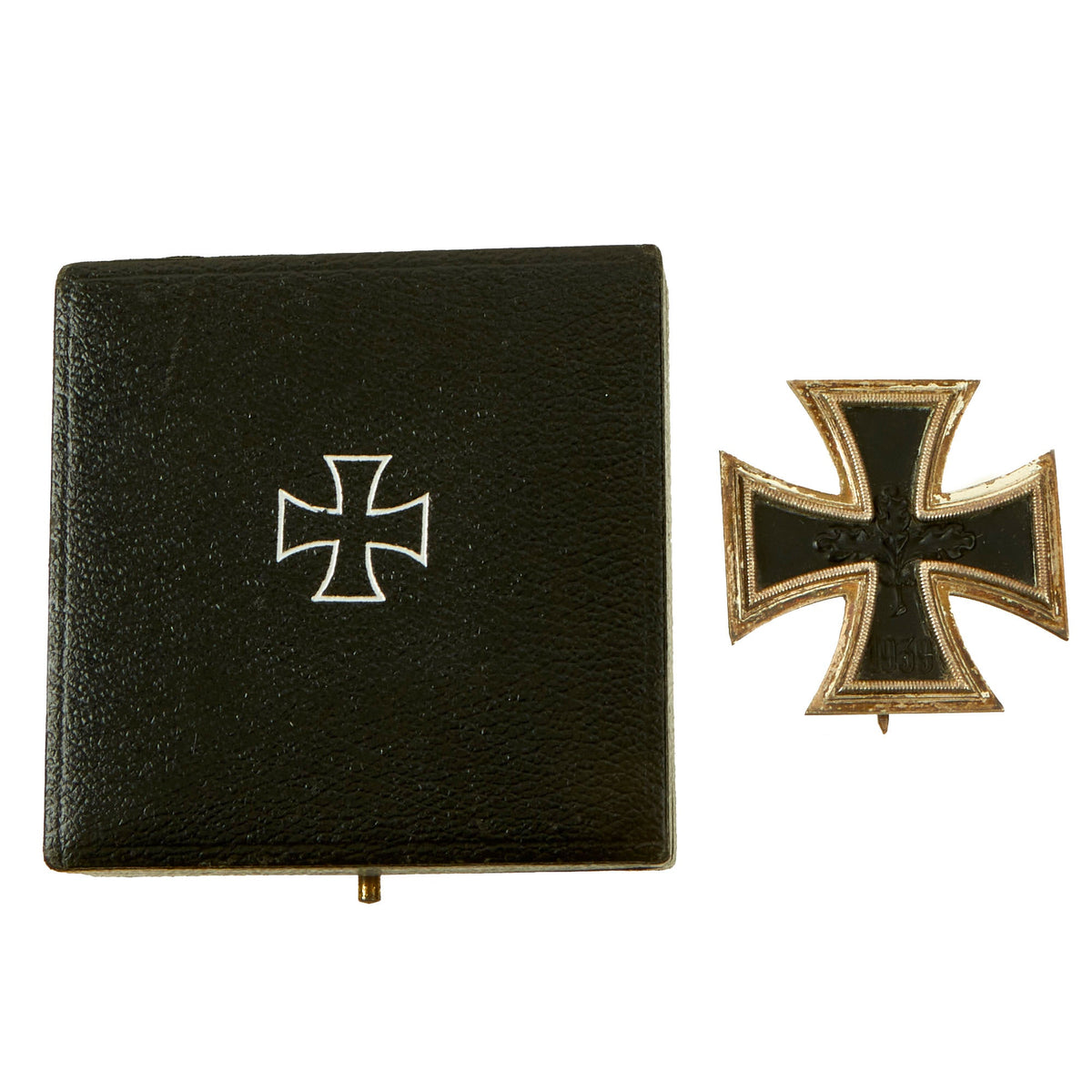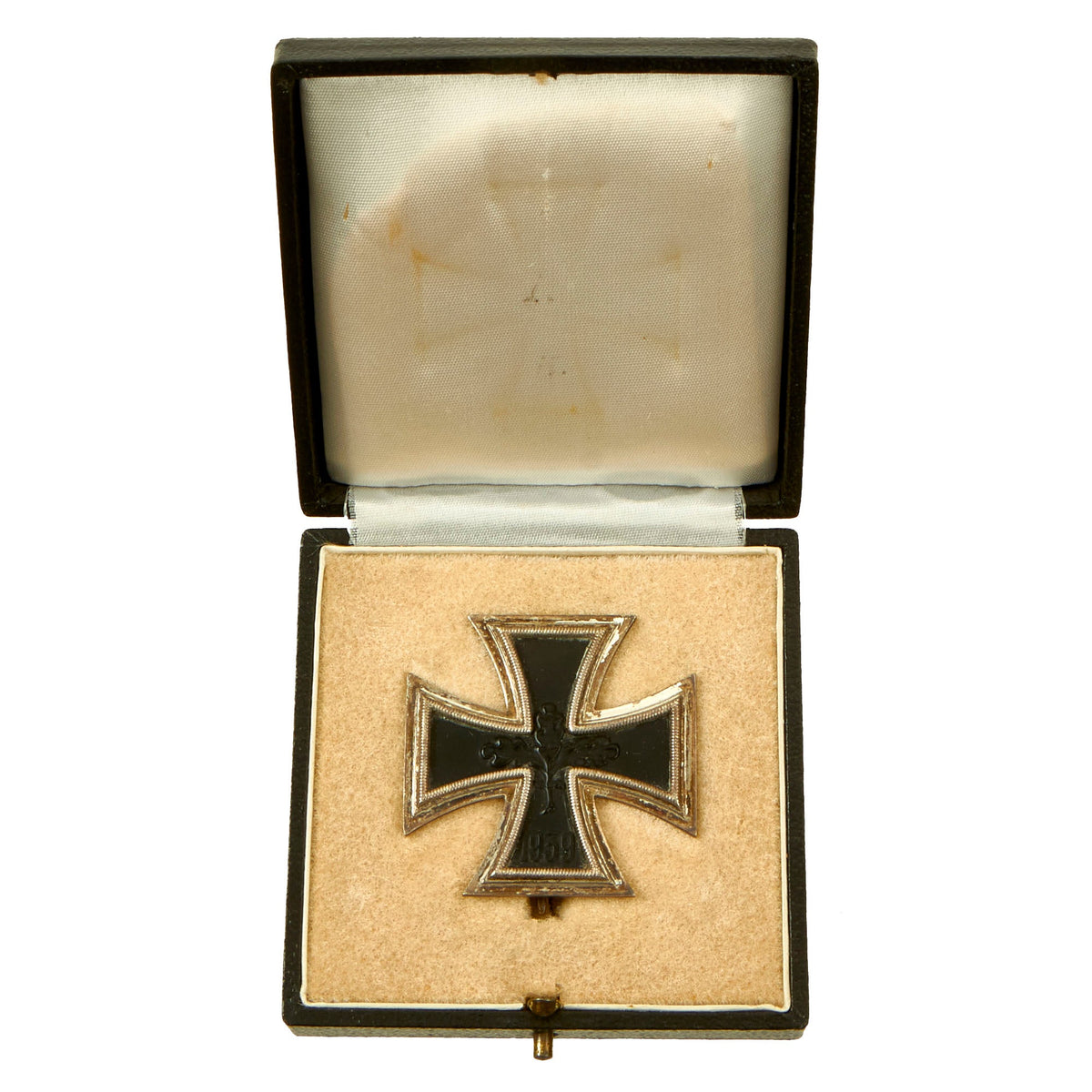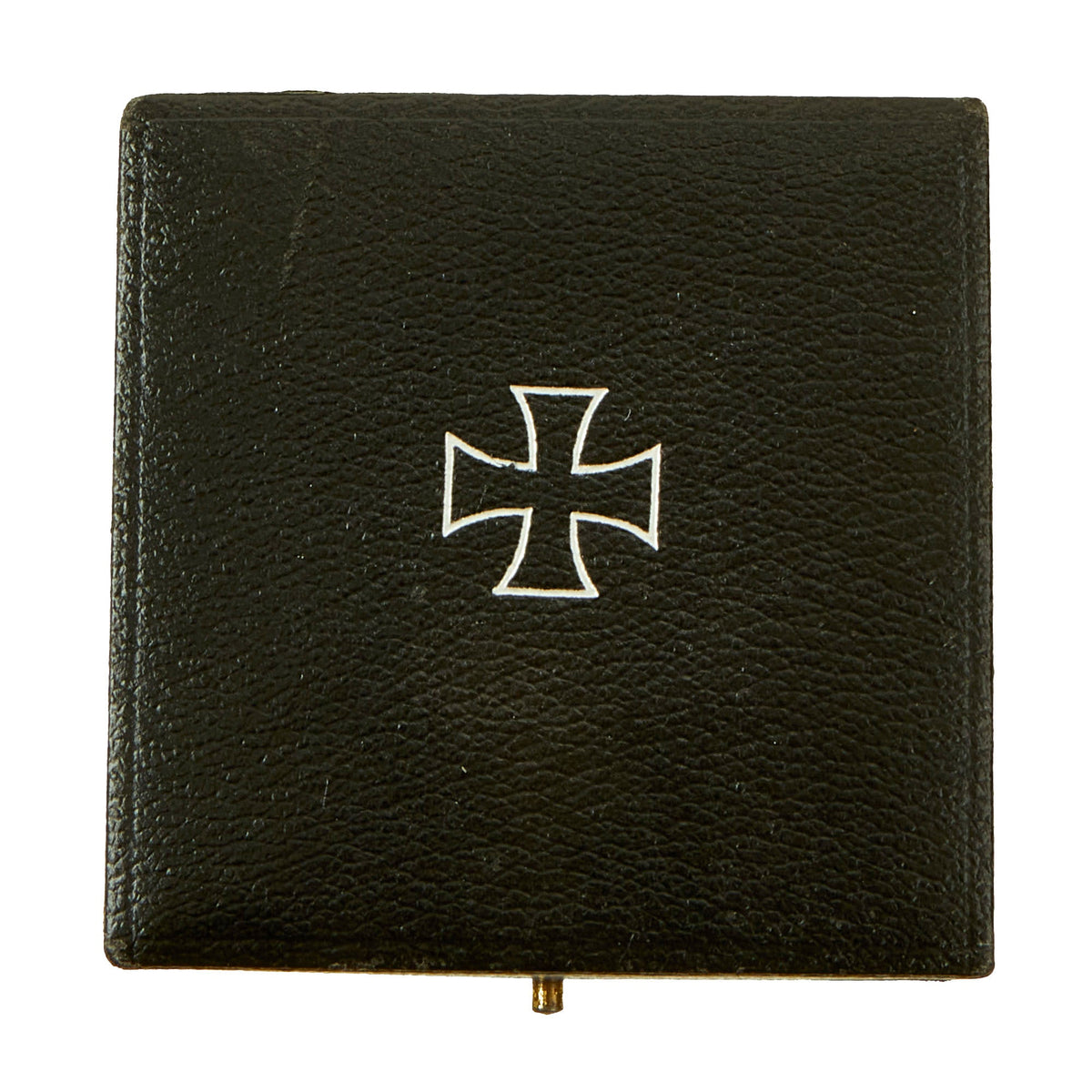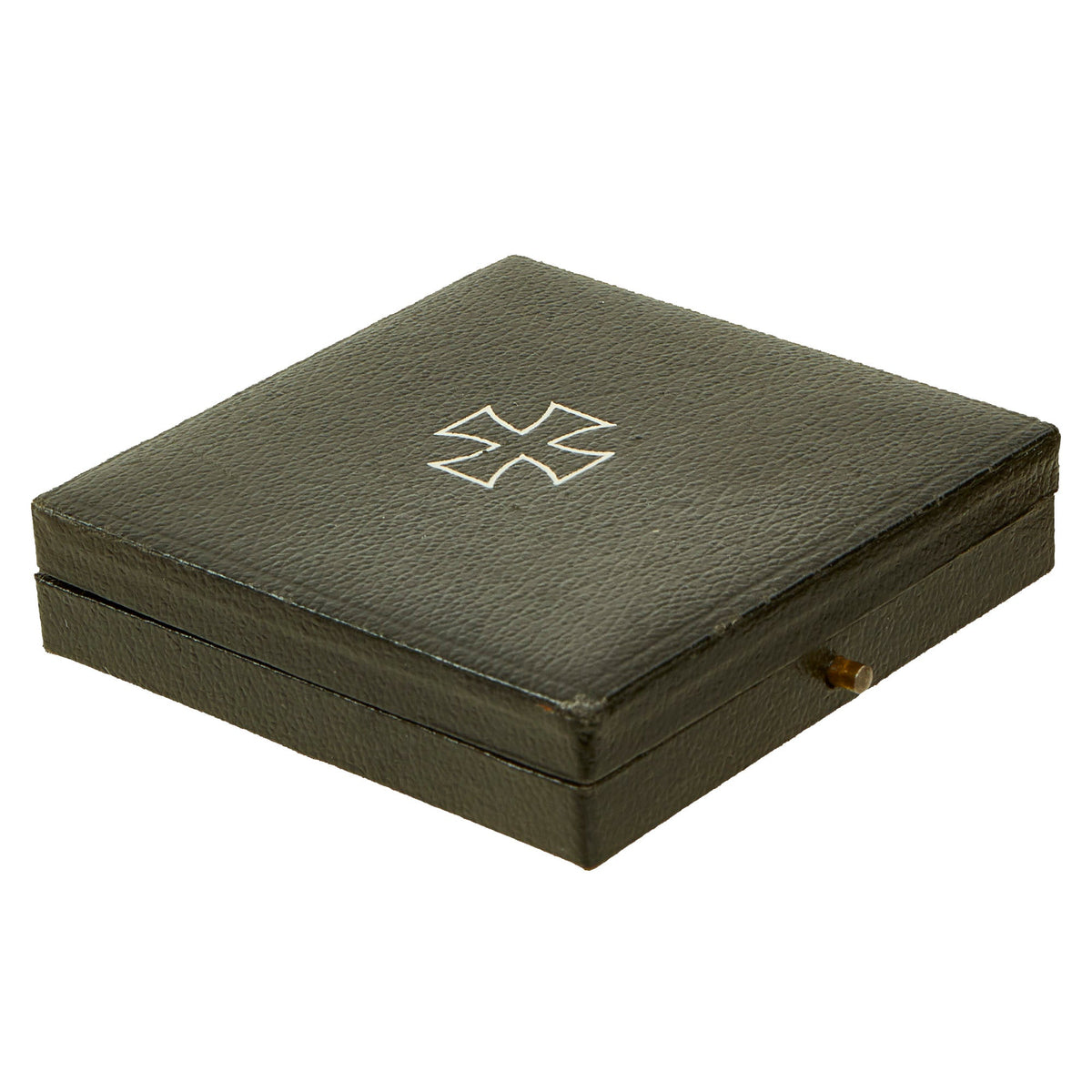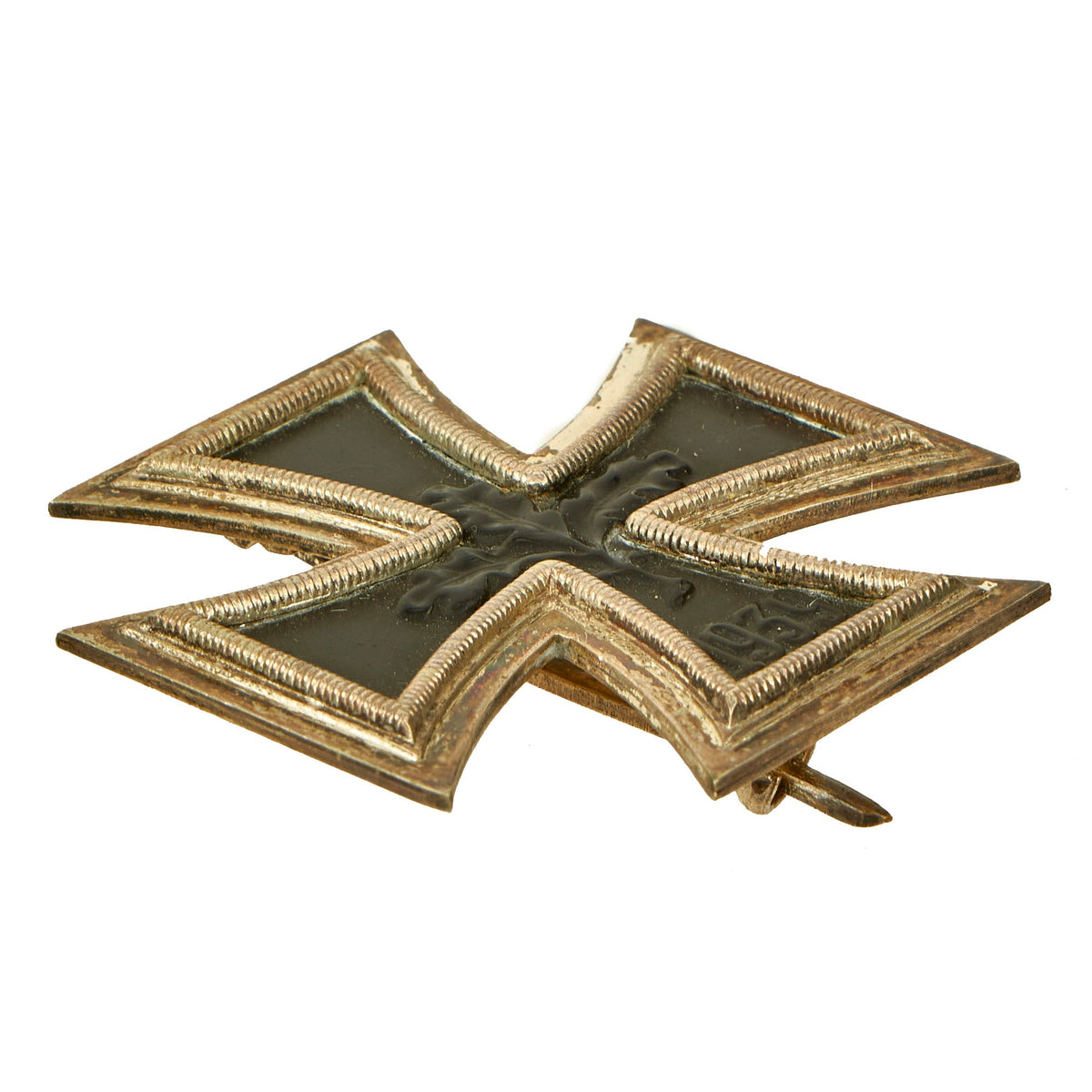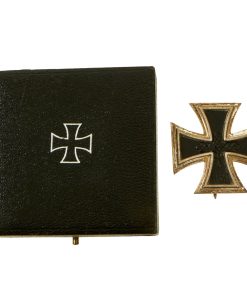Original German 1957 Pattern Bundeswehr Iron Cross First Class 1939 in Original Case – EKI Original Items
$ 295,00 $ 118,00
Original Item: Only One Available. Following the end of WWII in Europe, Germany had been partitioned into 4 occupation zones, Soviet, American, French, and British, with several smaller zones administered by various other European countries. The Capital of Berlin was also split up into zones as well. It was originally planned that the Allies would administer occupied Germany via the Allied Control Council, however the different goals of the four major powers resulted in a total breakdown of this system. France wanted very much to break Germany back into smaller states, as it had been during the 19th century. The Soviet Union wanted it to become a Marxist state and bullwark against Western Europe.
The eventual result of these disagreements was the partitioning of Germany into the Federal Republic of Germany (West Germany), and the German Democratic Republic (East Germany). This divide became the frontier of the new Cold War, and as such it became clear that West Germany would need to re-arm, as East Germany was already well into that process. This led to the formation of the West German Bundeswehr in 1955, with branches for the air, land and sea forces.
There were still plenty of service age veterans from WWII, which were readily inducted into the fledgling forces. However, many awards and medals from the WWII Era were prohibited from display due to the NSDAP symbols they bore. This was a bit of a sticking point, as members of the military definitely wanted to be able to still display their military achievements. The German Law about Titles, Orders and Honorary Signs (Gesetz über Titel, Orden und Ehrenzeichen) regulated the wearing of these awards in post war Germany.
This led to many awards being reissued in 1957, with the NSDAP symbols either removed or replaced with classic German motifs such as the Iron cross or Oak leaf clusters. Other awards such as the wound badge reverted to their Pre-WWII configurations.
This a very good example of a 1957 Pattern Iron Cross First Class 1939, with a Magnetic core, flat design, and tapered pin attachment. The medal is in very good condition, showing a lovely lightly oxidized patina on the silver portions of the obverse, showing that it is real silver. The black paint on the cross is in very good shape, showing light wear with no oxidation or flaking. The pinback is fully functional, though the catch is bent, so it can be difficult to unhook.
The basic design of the cross is a central Tatzenkreuz (cross pattée) struck from iron and mounted in a silver frame which has a raised crenulated decorative border. The obverse of the cross bears the date 1939 under an oak leaf cluster. Second class crosses would have a ring at the top where a ring was attached, and had more markings on the back. The first class award, however, was meant to attach directly to the front of the uniform.
The original case is in excellent condition, with fully intact leatherette on the exterior, showing a facsimile of the iron cross on the top lid. The hinge and catch are fully functional, and the interior lining is in great shape.
A very nice example of a Post 1957 reissued award, complete with case and ready to display!
The Iron Cross (Eisernes Kreuz, abbreviated EK) was a military decoration in the Kingdom of Prussia, and later in the German Empire (1871–1918) and NSDAP Germany (1933–1945). It was established by King Friedrich Wilhelm III of Prussia in March 1813 backdated to the birthday of his late wife Queen Louise on 10 March 1813 during the Napoleonic Wars (EK 1813). Louise was the first person to receive this decoration (posthumous). The recommissioned Iron Cross was also awarded during the Franco-Prussian War (EK 1870), World War I (EK 1914), and World War II (EK 1939, re-introduced with a swas added in the center).
The Iron Cross was normally a military decoration only, though there were instances of it being awarded to civilians for performing military functions. Two examples of this were civilian test pilots Hanna Reitsch who was awarded the Iron Cross 2nd Class and 1st Class and Melitta Schenk Gräfin von Stauffenberg, who was awarded the Iron Cross 2nd Class, for their actions as pilots during World War II.
1957 version
The wear of NSDAP-era decorations was banned in Germany after the war, as was any display of the swas (hook cross). In 1957, the Federal Republic of Germany authorized the wear of alternative de-NSDAPified replacement versions of a number of war decorations. These included the German Cross, with the swas replaced by a representation of the Iron Cross for the gold division, and the War Merit Cross with Swords for the silver division. Qualifying members of the Bundeswehr wore the award on their ribbon bar, represented by a small replica of the decoration on a field grey ribbon.
Fast Shipping with Professional Packaging
Thanks to our longstanding association with UPS FedEx DHL, and other major international carriers, we are able to provide a range of shipping options. Our warehouse staff is expertly trained and will wrap your products according to our exact and precise specifications. Prior to shipping, your goods will be thoroughly examined and securely secured. We ship to thousands clients each day across multiple countries. This shows how we're dedicated to be the largest retailer on the internet. Warehouses and distribution centres can be located throughout Europe as well as the USA.
Note: Orders with more than one item will be assigned a processing date depending on the item.
Before shipping before shipping, we'll conduct a thorough inspection of the items you have ordered. Today, the majority of orders will be delivered within 48 hours. The delivery time will be between 3-7 days.
Returns
The stock is dynamic and we cannot completely manage it because multiple stakeholders are involved, including our factory and warehouse. So the actual stock may alter at any time. It's possible that you may not receive your order once the order has been made.
Our policy is valid for a period of 30 days. If you don't receive the product within 30 days, we are not able to issue a refund or an exchange.
You can only return an item if it is unused and in the same state as the day you received it. You must have the item in its original packaging.
Related products
Uncategorized
Uncategorized
Band of Brothers ORIGINAL GERMAN WWII Le. F.H. 18 10.5cm ARTILLERY PIECE Original Items
Uncategorized
Uncategorized
Uncategorized
Uncategorized
Angolan Rebel 1970s era 60mm Inert Display Mortar from Angolan Civil War Original Items
Uncategorized
Australian WWII Owen MK1 Machine Carbine SMG Custom Fabricated Replica with Sling Original Items
Uncategorized
Uncategorized
Armored Burgonet Helmet & Polearm from Scottish Castle Leith Hall Circa 1700 Original Items
Uncategorized
Uncategorized
Armoured Fighting Vehicles of the World: AFVs of World War One (Hardcover Book) New Made Items
Uncategorized
Uncategorized
Uncategorized
Uncategorized
Uncategorized
Uncategorized
Uncategorized
